Peels
Peels involve the application of a chemical substance to the face, neck, chest and backs of the hands to destroy the epidermis and some of the dermis, leading to exfoliation, tissue regeneration and elimination of certain skin blemishes.
Chemical peels, available for many years, have now been expanded and perfected, and are associated with other methods in the overall management of skin ageing. They can also be used to revive and even out a dull complexion, acne or melasma-type pigment disorders and to improve skin radiance.
Peels are usually classified according to their level of skin penetration, from the most superficial layer to the deepest.
Deep peels are associated with scarring risks and irreversible pigmentation changes. These are not practised at the Institute.
Superficial peels: radiance effect
These are the most common peels and involve the use of acids (glycolic acid, fruit acids, salicylic acid), resorcin or a combination of several products. They eliminate the outer layers of the epidermis and stimulates the formation of collagen.3 to 6 sessions with intervals of 15 days to 3 weeks in between result in smooth, radiant, rejuvenated skin, tightened pores, and a more even and luminous complexion lasting several months.
Post-recovery is straightforward allowing activities to be started immediately in spite of slight temporary redness. This is why these peels are called a “lunch peel”.
They are also frequently used to treat hormonal pigmentation of the pregnancy-mask type, leading to better penetration of depigmenting active ingredients.
Superficial peels are a true medical beauty treatment for all patients who want to retain a youthful and radiant skin.
Medium peels: youthful effect
These use trichloroacetic acid (TCA) at a concentration of 15 to 35%. They act more deeply as they eliminate the epidermis and the outer part of the dermis, leading to neocollagenesis.Application generates a strong sensation of heat whose intensity is proportional to the concentration of the product used. This sensation lasts from a few minutes to a few hours.
The treated areas show a sunburn-like red colour for 2 to 3 days then peel between the 4th and 8th day, resulting in a new, rosy complexion.
This type of peel is effective for superficial acne scarring, crow’s feet, age spots and skin ageing due to the sun. It exfoliates skin unevenness and firms up the skin.
Depigmenting peels
Brown spots or pigment irregularities due to abnormal accumulation of melanin can appear on the skin.This can be in the form of lentigo (liver spots) due to ageing and exposure to the sun, melasma or pregnancy mask due to increased oestrogens, or post-inflammatory pigmentation (acne, scarring).
Several treatments including peels used alone or in combination exist to restore skin radiance and evenness.
The depigmenting peels are used at the Institute include Spot Peel, Lightening Peel and Dermamelan.
Application is painless and post-recovery symptoms are mild (pinkish skin for 3 to 4 days) without the need for social exclusion after the procedure.
To prevent spots from reappearing, a sun protection factor of 50+ must be used
